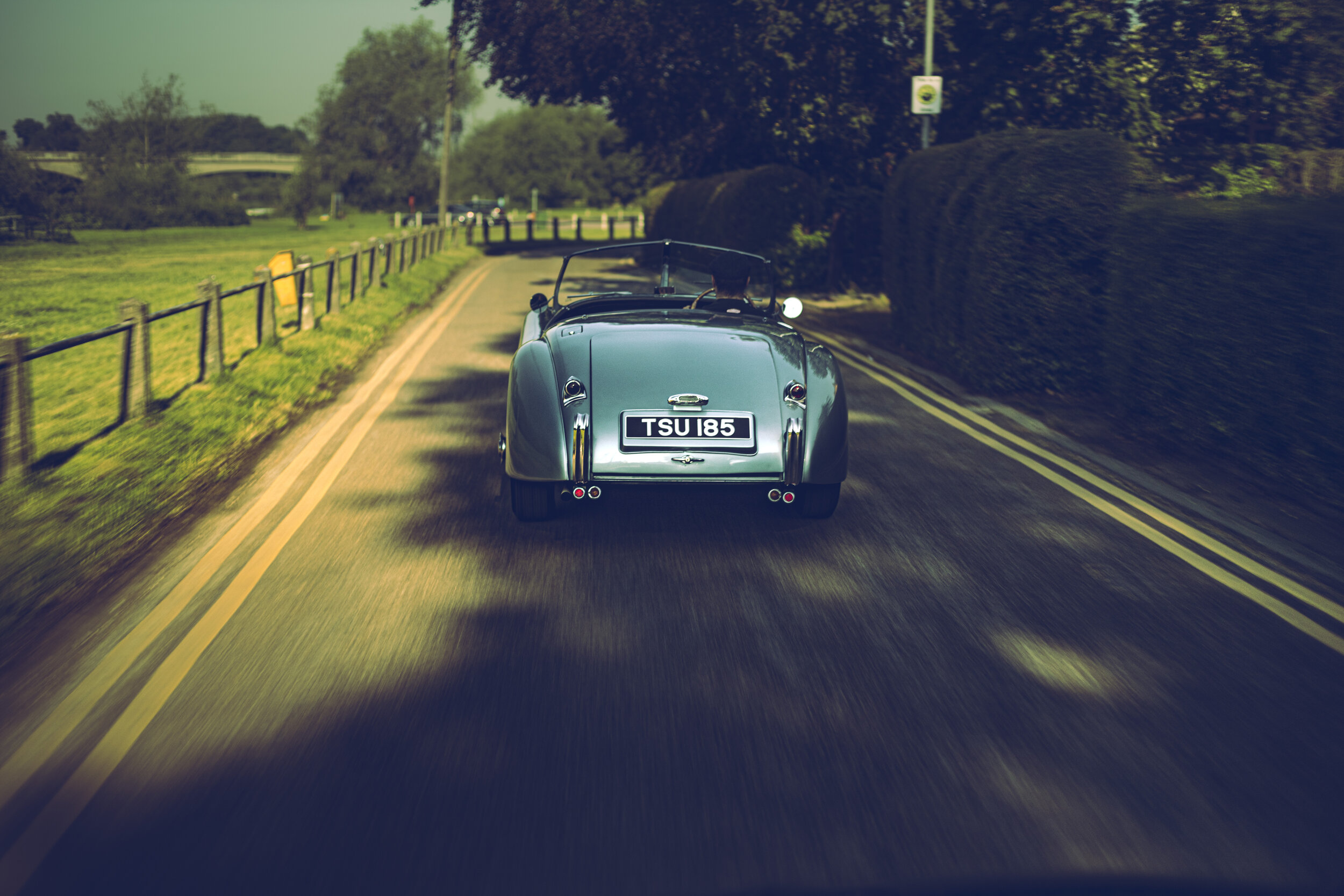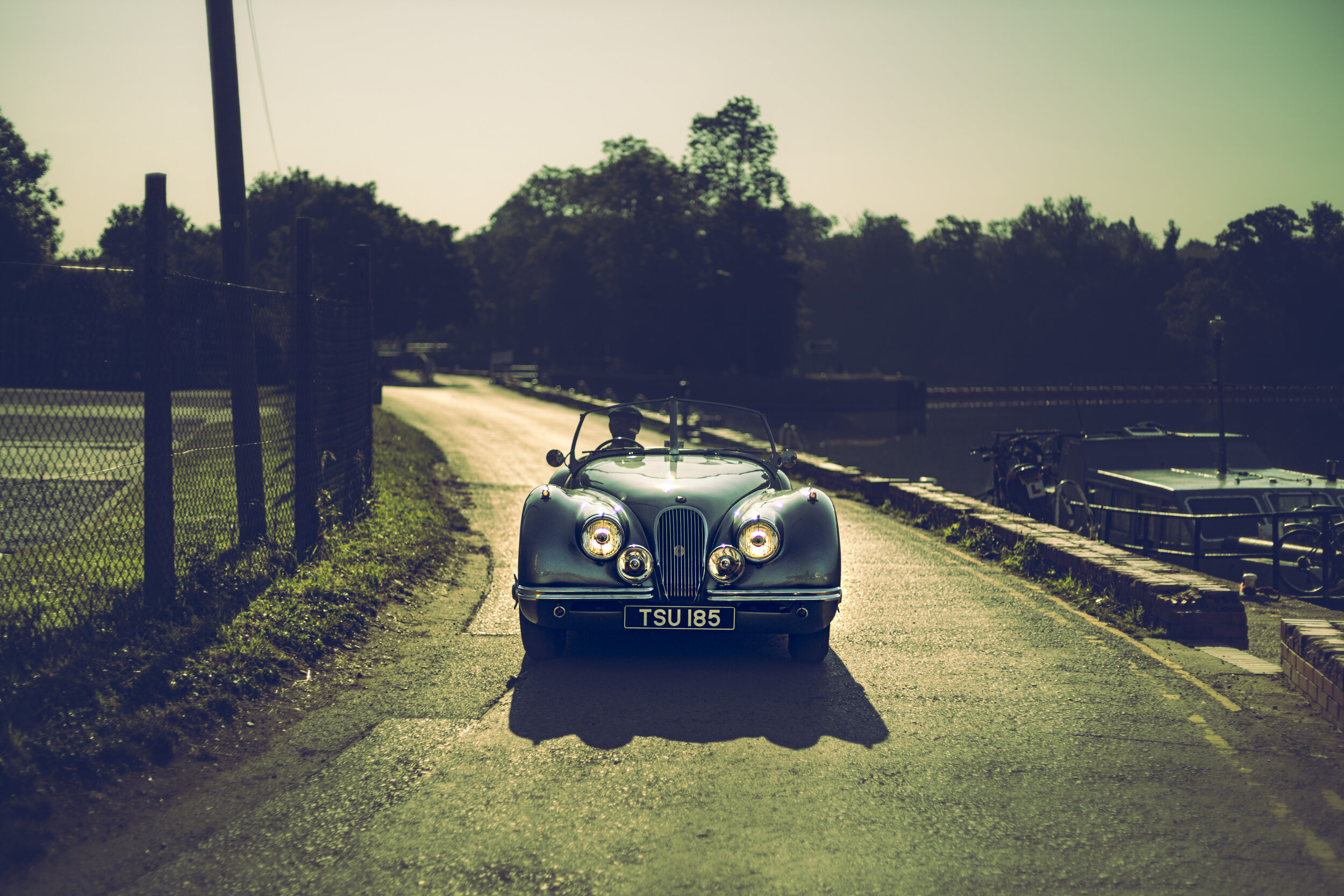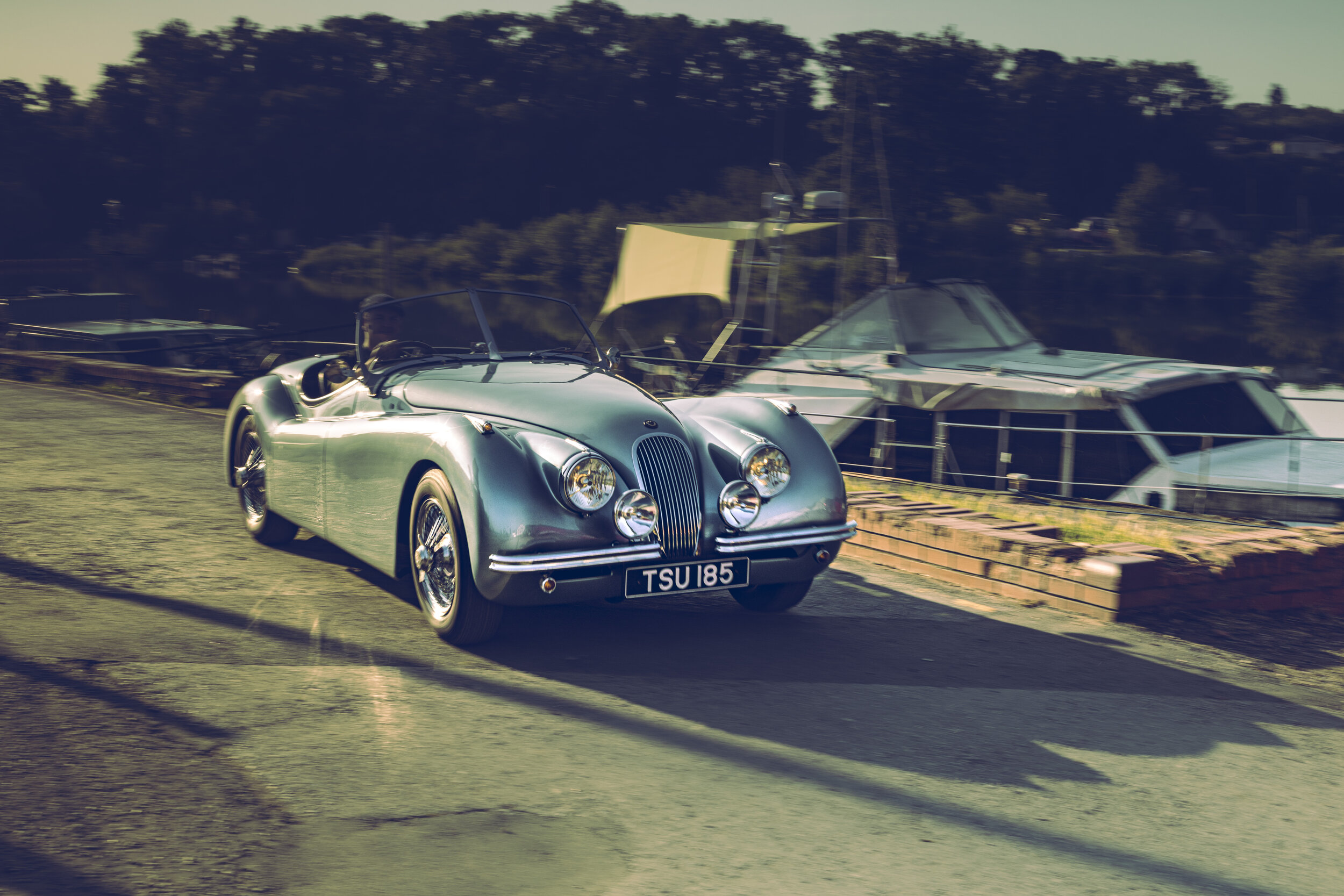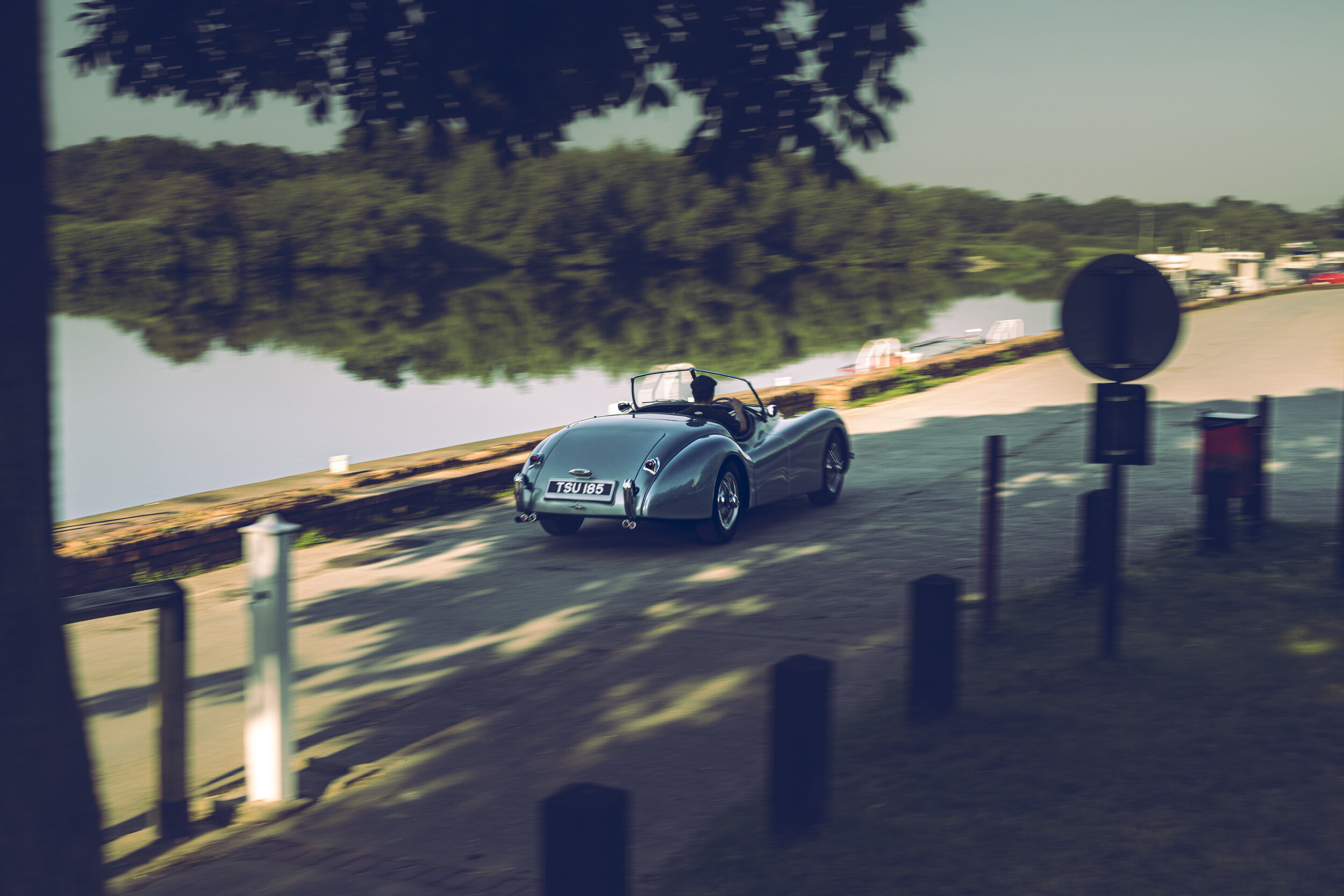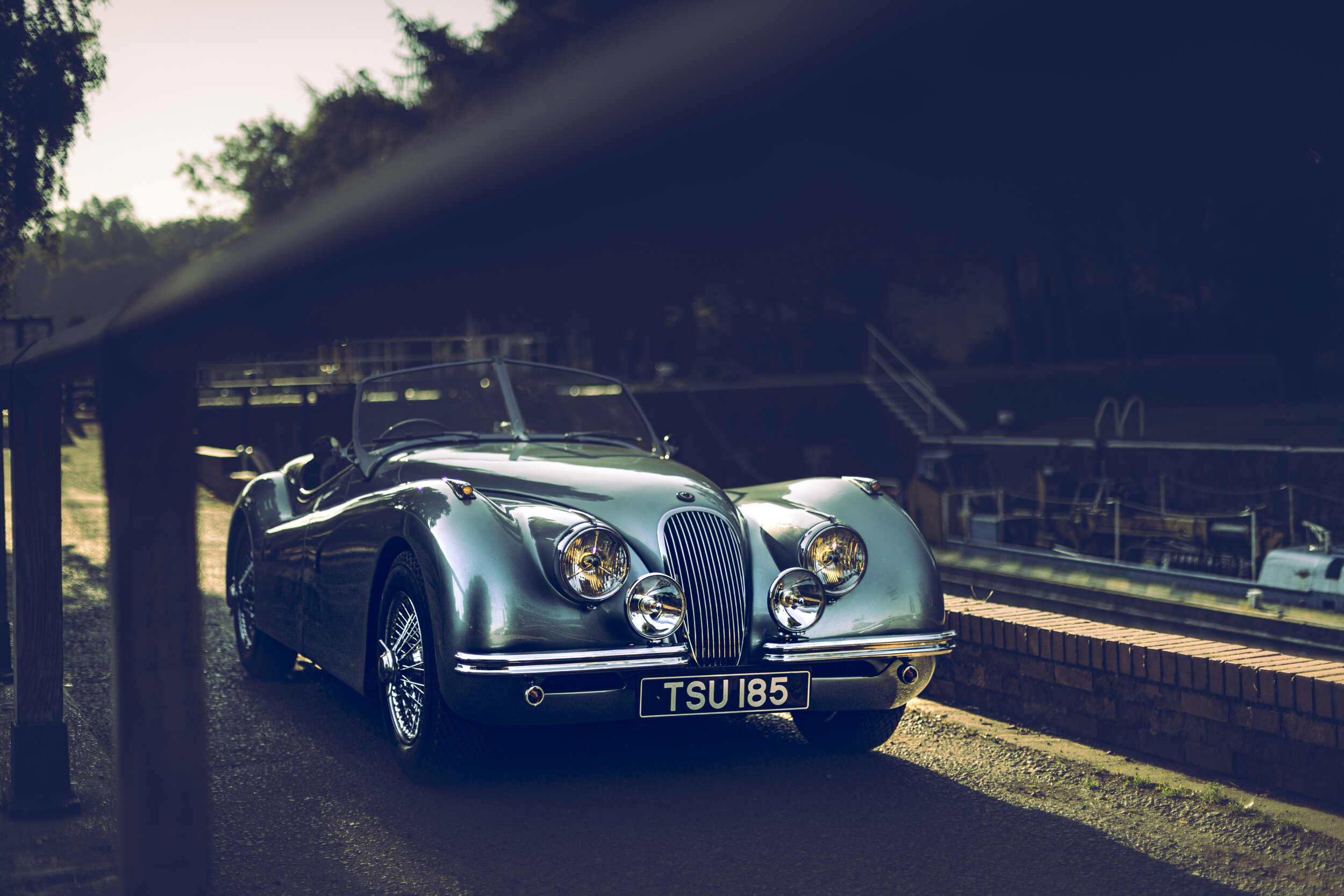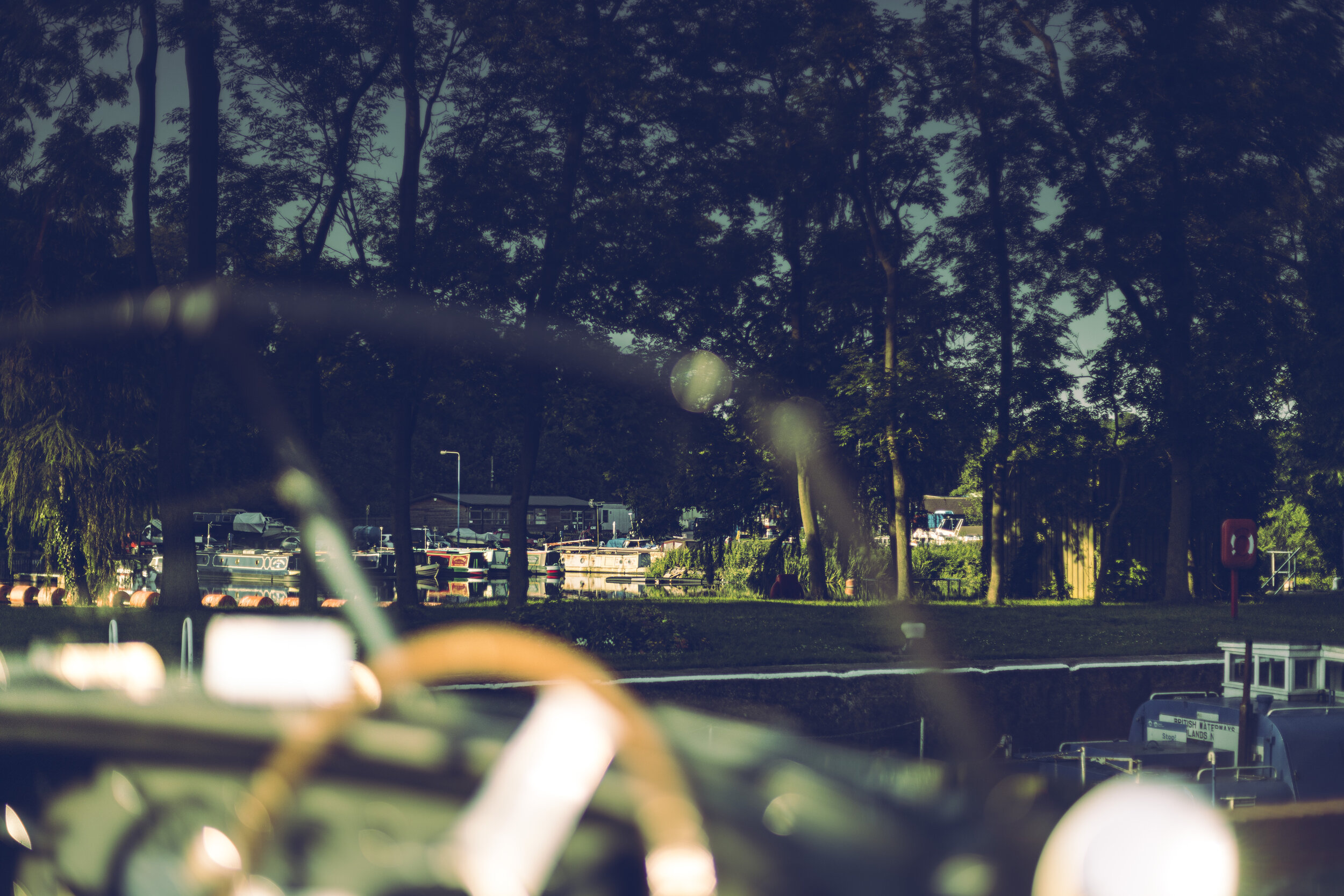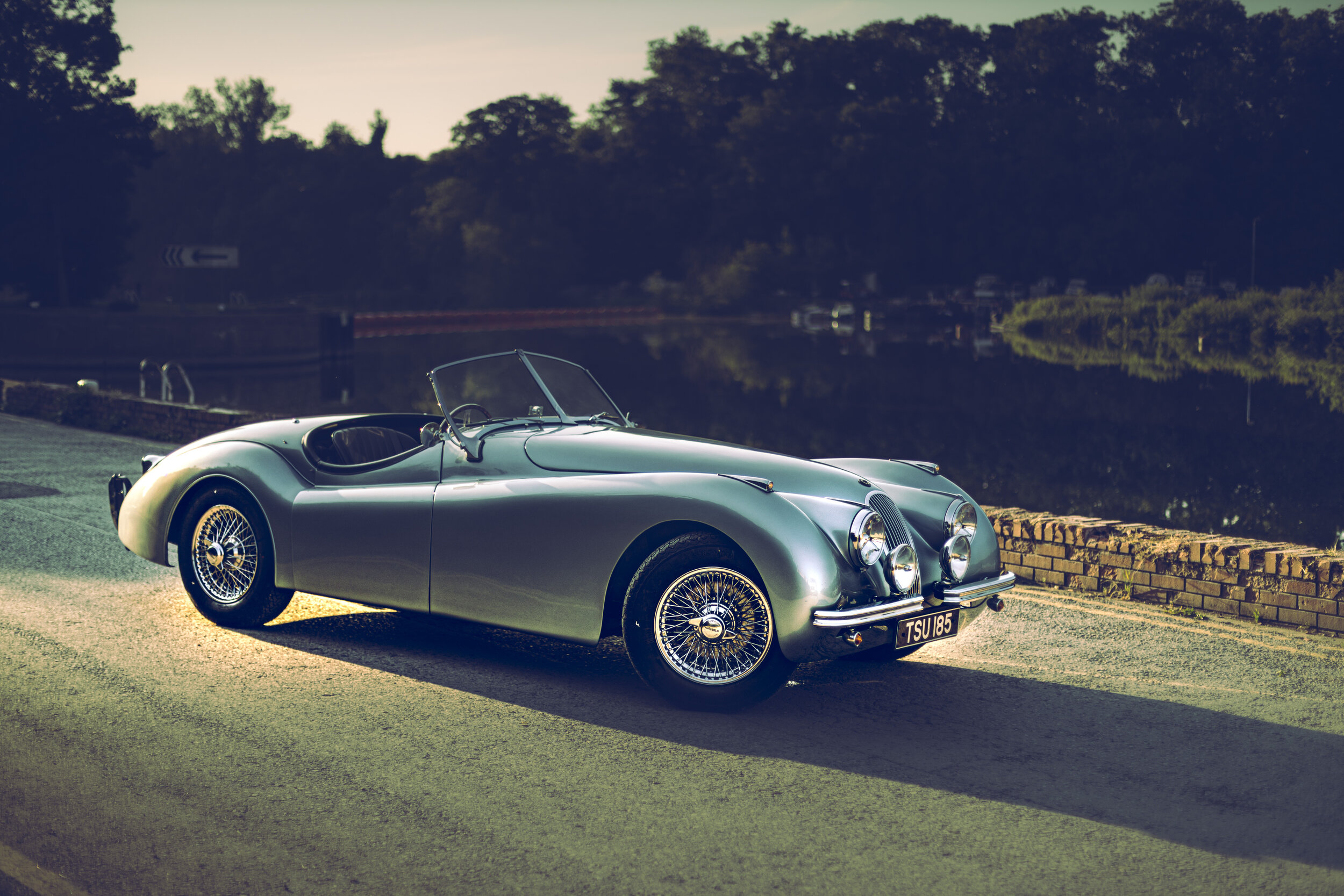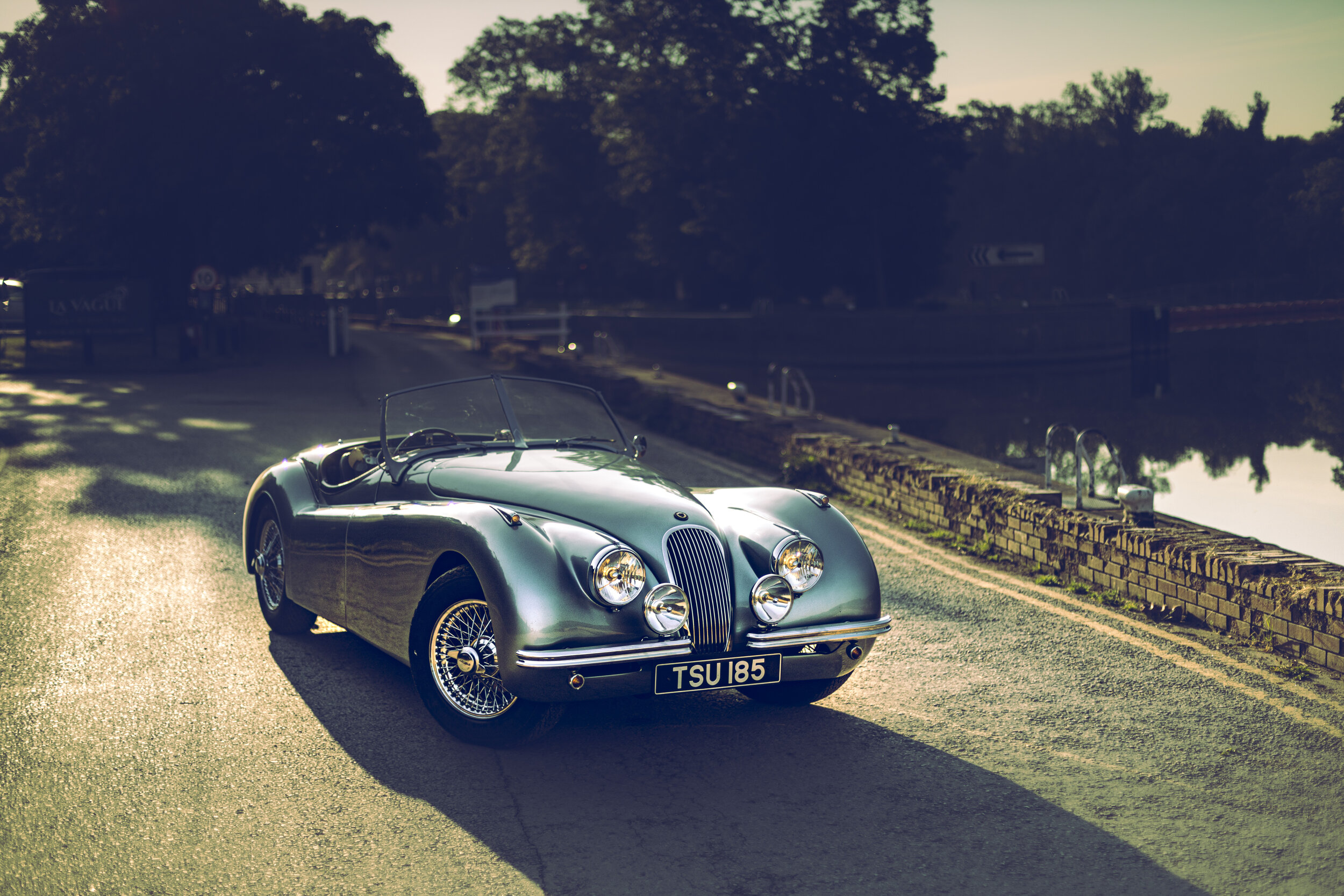1950 Jaguar XK120 Open Two Seater
One thing that sets classic Jaguars apart from their peers is not outright performance (which, to be clear, they have a long history of front-of-pack motorsport), but the fact that they always strived to deliver the power of their engines in the smoothest possible way. They also did not try to make muscle cars, or brash cars in any sense. On the contrary, their styling aimed to produce shapes that the air would approve of, graced with flowing lines and devoid of anything that might upset its slippery advance on the way to their often prodigious top speeds.
William Lyons, Jaguar’s founder and chairman, was overwhelmed by the positive reaction that the car was welcomed with at its launch at the 1948 London Motor Show, and decided his brand-new straight-six would not be restricted to powering luxurious saloons, but would also be allowed to stretch its legs under the bonnet of real sports cars. In 1951, when this particular car was made, the memory of the war was still vivid and the perception of what was considered dangerous was a very different one from what we have today. For a generation of survivors, the greatest risk seemed to be not living one’s life to the fullest. In this car, driving pleasure is delivered in droves long before the speedometer approaches the Jag’s much-advertised 120mph top speed. It is very much at home on the winding B-roads, changing direction with an agility that belies its elegance, and responding to the driver’s input with a degree of telepathy reserved for much less comfortable suspensions. For all the boldness of its technically minded marketing, the character of the car is much more suave then the headline figures would suggest. Truth be told, the British cars, such as this one, first sold by the Jaguar Manchester, were designed to be fueled by the lower octane “Pool petrol” of the era, so they lost some power compared with their export counterparts.
Fortunately, they lost none of their charm, and this car’s very first owner was none other than Joseph Cyril Bamford. Having served in the RAF during the war, he must have been seduced by that open cockpit aircraft feeling and promptly signed on the dotted line. He bought the car the same year he started painting his products in the now iconic yellow of JCB. His company, which is still in family ownership to this day, was still in its infancy and its JCB logo only appeared for the first time two years later, in 1953. The rest, as they say, is history.
Photography by Virgiliu Andone.
We have been entrusted with the mechanical refresh including the front suspension restoration, steering overhaul and engine service. If you would like to discuss the rejuvenation of your XK120, please don’t hesitate to get in touch using the contact form below or via our usual contact details :
0115 9262266 or info@thorntonrestorations.com


